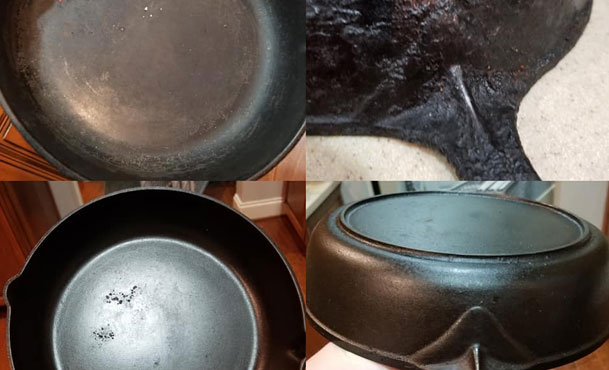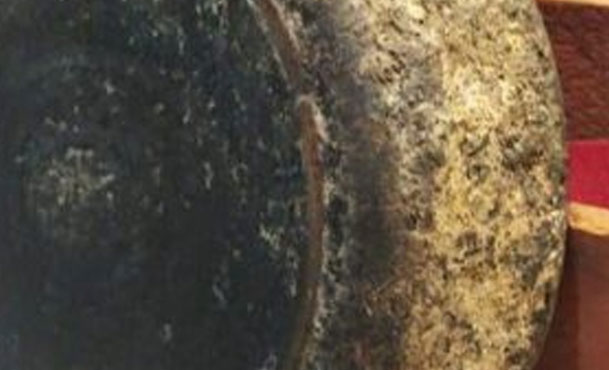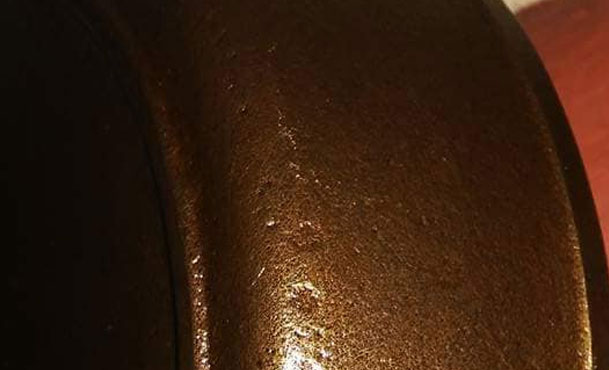
I've worked on a lot of gross cast iron pieces and love the finished product of a healthy restored cast-iron skillet. I never recommend anyone to eat off a cast iron skillet after buying from a yard sale, antique mall, estate sales...etc. Cast iron skillets have a tendency to absorb smells and grow mold. I've seen cast iron ware riddled in so much mold and rancid grease, that I had to run to my lye tank while holding my breath.

Restoring cast iron sounds intimidating, but it's rather simple. After a few rounds of restoring cast iron pieces, the technique becomes easier. I have two options to choose from when I restore cast iron: lye tank and electrolysis. When I first started restoring cast iron, I used lye.
The first time I considered doing the lye tank, I was extremely nervous because lye is extremely caustic. After watching several recommended Youtube videos by experienced cast iron collectors, I felt like I was well versed in how to properly build a lye tank.
To build a lye tank, you need the following supplies:
100 percent concentrated lye from Ace Hardware, rubber kitchen gloves, 18-gallon storage box WITH lid, safety eye goggles, steel wool pads, Bar Keepers Friend, dish soap, paper towels, and rags that you're not afraid to get dirty. You can purchase lye at Ace hardware. I use100 percent concentrated lye, found in the plumbing section. I use three bottles of lye because I use an 18 gallon deep Rubbermaid tub with a lid.
While making a lye tank, you want your tank OUTSIDE. The gasses become extremely toxic and the mixture will heat up extremely fast. Make sure you use, gloves, and safety goggles. You will need to add 5 gallons of water for each pound of lye. Water must be applied first. The other way around will cause a massive reaction which will explode. Adding water first then lye will generate heat but not an explosion. I always pour very slowly. After I'm done adding my ingredients, I wait for 30 minutes or so, because the mixture is very caustic and very hot.
After making your lye tank, you need to place your cast iron skillet inside the tank, close the lid and forget about your cast iron for several days. After restoring cast iron for two years, this is probably the most painful part for me because I'm excited about the results. I keep my cast iron in my tank for seven to eight days before I take the skillet out. By the end of the 7 days your lye water will become pitch black. This is normal because the old seasoning is black. When removing cast iron from the tank you will need kitchen gloves and eye protection. Place your cast iron in water to wash off lye. Using your steel wool pads, you will need to scrub your pan until your rinse water is a semi-clear color and not black.
Scrub cast iron a second time using Bar Keepers Friend. This helps to break down any old seasoning build up that you weren't able to remove with steel wool. After using Bar Keepers, you will need to wash your cast iron skillet off with soap and very cold water. Dry with paper towels or an old wash rag that you don't mind getting dirty or throwing away.
Rub down your cast iron with oil, and place aside. Every 15 minutes you need to observe your cast iron to make sure that flash rust has not occurred. If orange tints (flash rust) pop up, rub over with oil. Keep doing this until there are no more visible signs of flash rust.
Below, I have a method I use in seasoning cast iron. This helps to eliminate any sticky surfaces.
After seasoning a total of three times, your cast iron should have a smooth and glossy surface. I always suggest cooking bacon in your pan several times to create a more non-stick surface.

